I gave an app with say 10 view controllers. I use navigation controller to load/unload them.
All but one are in portrait mode. Suppose the 7th VC is in landscape. I need it to be presented in landscape when it gets loaded.
Please suggest a way to force the orientation go from portrait to landscape in IOS 6 (and it will be good to work in IOS 5 as well).
Here is how I was doing it BEFORE IOS 6:
- (void)viewWillAppear:(BOOL)animated {
[super viewWillAppear:animated];
UIViewController *c = [[[UIViewController alloc]init] autorelease];
[self presentModalViewController:c animated:NO];
[self dismissModalViewControllerAnimated:NO];
}
- (BOOL)shouldAutorotateToInterfaceOrientation:(UIInterfaceOrientation)interfaceOrientation{
return (interfaceOrientation == UIInterfaceOrientationPortrait);
}
Presenting and dismissing a modal VC was forcing the app to review its orientation, so shouldAutorotateToInterfaceOrientation was getting called.
What I have have tried in IOS 6:
- (BOOL)shouldAutorotate{
return YES;
}
-(NSUInteger)supportedInterfaceOrientations{
return UIInterfaceOrientationMaskLandscape;
}
- (UIInterfaceOrientation)preferredInterfaceOrientationForPresentation{
return UIInterfaceOrientationLandscapeLeft;
}
On load, the controller keeps staying in portrait. After rotating the device, the orientation changes just ok. But I need to make the controller to rotate automatically to landscape on load, thus the user will have to rotate the device to see the data correctly.
Another problem: after rotating the device back to portrait, the orientation goes to portrait, although I have specified in supportedInterfaceOrientations only UIInterfaceOrientationMaskLandscape. Why it happens?
Also, NONE of above 3 methods are getting called.
Some (useful) data:
- In my plist file I have specified 3 orientations - all but upside down.
- The project was started in Xcode 4.3 IOS 5. All classes including xibs were created before Xcode 4.5 IOS 6, now I use the last version.
- In plist file the status bar is set to visible.
- In xib file (the one I want to be in landscape) the status bar is "None", the orientation is set to landscape.
Any help is appreciated. Thanks.

